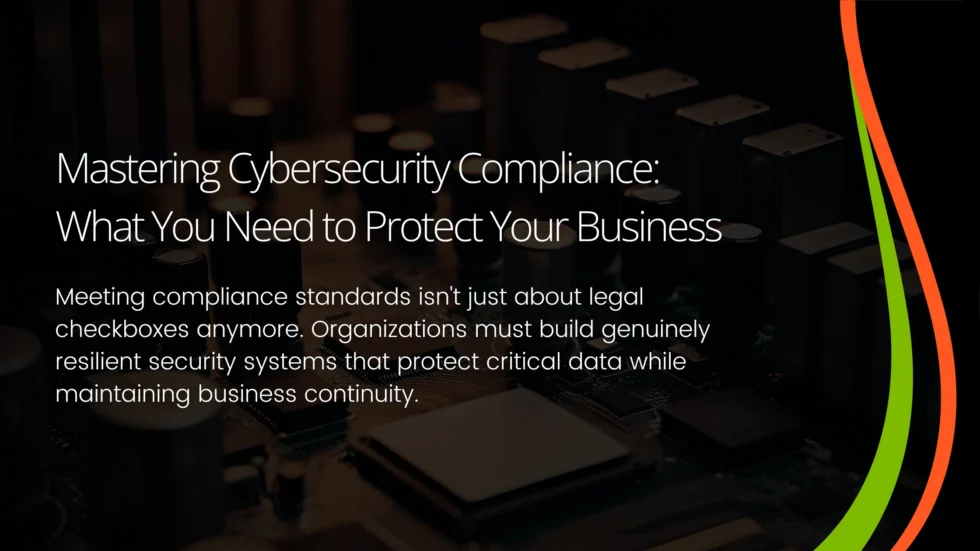Gone are the days of cybersecurity being a “nice to have”—it’s a must for medium-sized businesses. With cyber threats evolving rapidly, regularly reviewing your strategy is critical to ensure you’re business properly protected.
Ready to stop worrying a about what’s lurking in the dark? Here are five key signs your cybersecurity approach might be outdated, along with practical steps to help you improve.
1. Overlooking Your Microsoft Tenant
What is Microsoft Tenet? Do I have one?
Many businesses rely on a Microsoft tenant for email and Office apps, but it’s much more than just those. Your Microsoft tenant is central to your IT infrastructure and holds sensitive business data. So to answer your question, yes, you most likely do. And if you are still unsure consult your IT provider.
The Risks of Not Securing Your Tenant
If your cybersecurity strategy doesn’t prioritize securing this essential asset, you’re leaving a door wide open for attackers. Cybercriminals often target email accounts to gain access to the broader network.
Real-World Example: A compromised email account can lead to unauthorized access to sensitive company data, including files, calendars, and even communications.
Actionable Tip: Review your tenant’s security settings regularly, and make sure your email accounts are protected with multi-factor authentication (MFA).
2. Lacking Managed Detection and Response (MDR) What is MDR?
Managed Detection and Response (MDR) goes beyond just having antivirus software in place. It’s a comprehensive solution that offers real-time monitoring and rapid response to cyber threats.
Key Questions to Ask Yourself:
- If someone attempts to log in from an unknown location, will you know right away?
- Do you have the tools to detect and respond to incidents swiftly?
Why It Matters: Without an MDR solution, threats could go undetected for days or weeks, causing serious damage before you even realize what’s happening.
Actionable Tip: Assess your current capabilities. If you don’t have the in-house resources to monitor for threats 24/7, consider partnering with an MDR provider to strengthen your defense.
3. No Cybersecurity Insurance
Why You Need Cybersecurity Insurance
Cyberattacks aren’t just disruptive—they can be financially crippling. Ransomware, in particular, can bring operations to a standstill, resulting in lost revenue and significant recovery costs.
How to Choose the Right Policy:
- Coverage: Ensure the policy covers data breaches, ransomware, and business interruption.
- Limits: Make sure the maximum payout aligns with your business’s risk exposure.
- Exclusions: Understand any situations the policy doesn’t cover.
- Vendor Reputation: Check reviews and experiences of other businesses with the insurer.
4. Relying on Unverified Assumptions
The Problem with Assumptions in IT Recovery
Many businesses assume they can bounce back quickly from IT issues, but without testing, these assumptions can be risky.
How to Test Your Readiness:
- Self-Reflection: Ask yourself, “If my server crashes today, how long will it take to recover?”
- Conduct Drills: Regularly run recovery drills to test your actual response time. If recovery takes longer than expected, make adjustments to reduce downtime.
Why It Matters: Unchallenged assumptions can lead to costly delays in the event of a failure.
Actionable Tip: Don’t wait until disaster strikes to find out your assumptions were wrong. Test your recovery processes now and refine them for faster response times.
5. Treating IT and Cybersecurity as One
The Evolution of Cybersecurity
In the past, cybersecurity was seen as just one part of the broader IT function. But today, with the rise in cyber threats, it’s a separate discipline that requires focused resources and expertise.
Why This Shift is Necessary
When IT teams are tasked with managing both IT and security, it can lead to gaps in your protection. Cybersecurity needs dedicated attention.
Recommendation: If your IT team is overloaded, consider establishing a separate cybersecurity department or working with specialists to ensure nothing slips through the cracks.
Actionable Tip: Start treating cybersecurity as its own department, with its own budget and goals. This strategic change ensures you give cybersecurity the focus it deserves.
If any of these signs sound familiar, it’s time to rethink your approach. Ignoring critical components like your Microsoft tenant or relying on outdated assumptions can leave your business vulnerable. By staying proactive—investing in tools like MDR, securing cybersecurity insurance, and ensuring your team is focused on dedicated security tasks—you can significantly improve your defenses against today’s cyber threats.
At First Call Computer Solutions, we specialize in helping businesses strengthen their cybersecurity posture. If you see any of these red flags in your strategy, we’re here to help. Contact us today to learn how we can support your business in staying secure.








